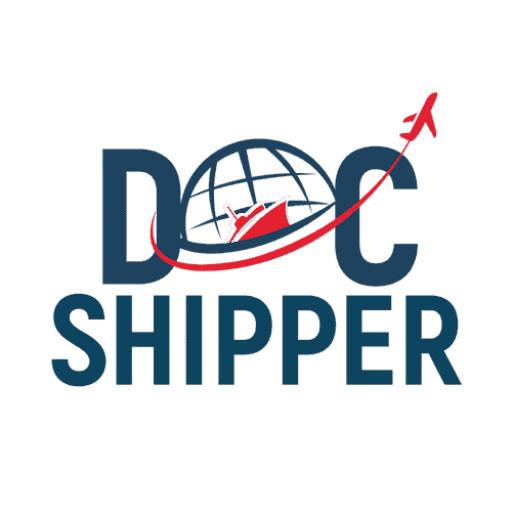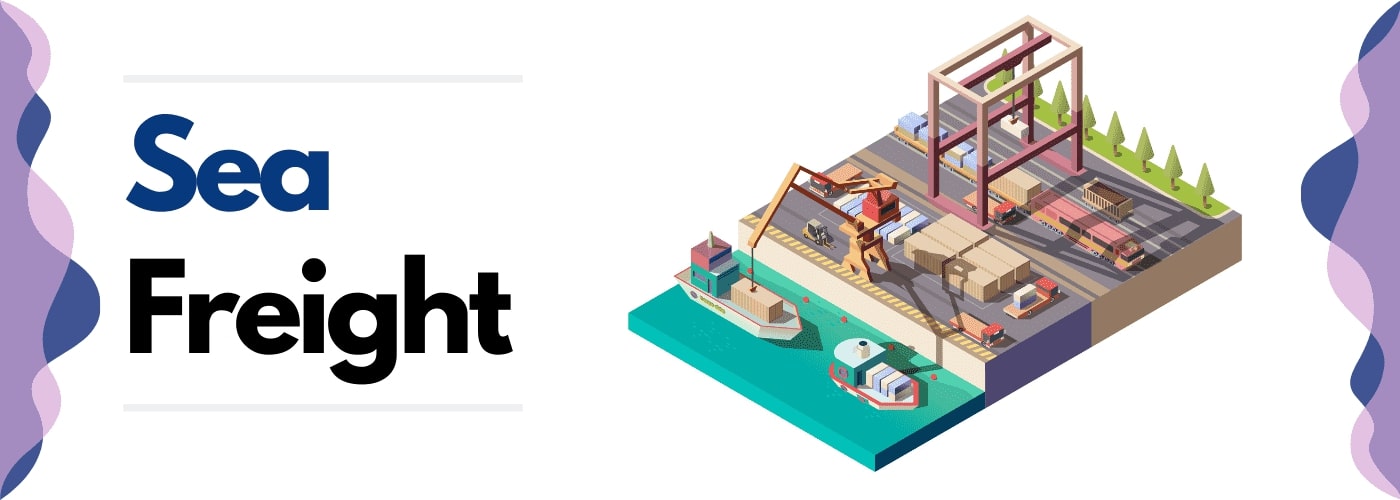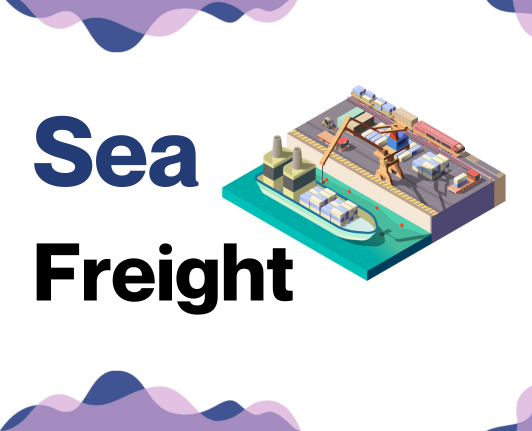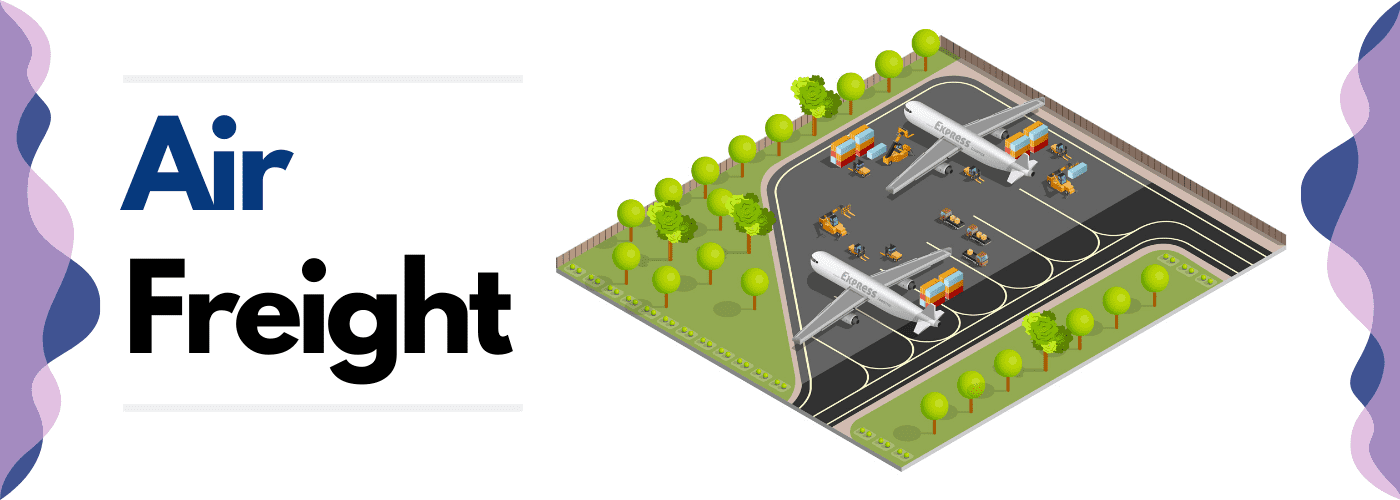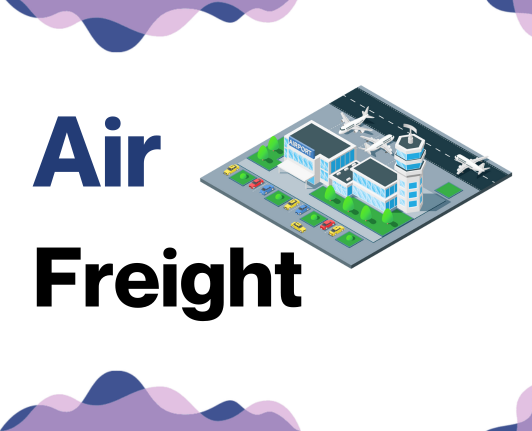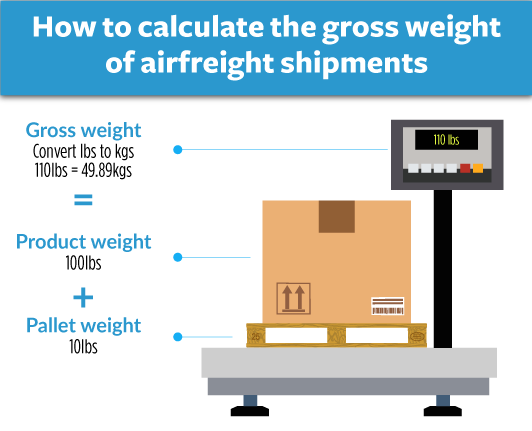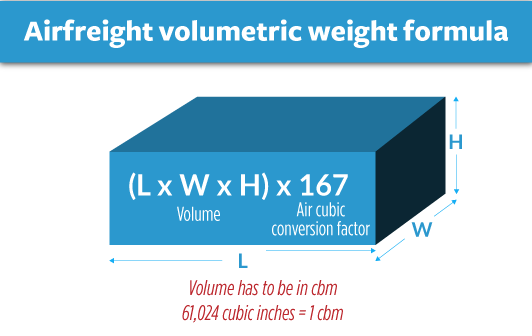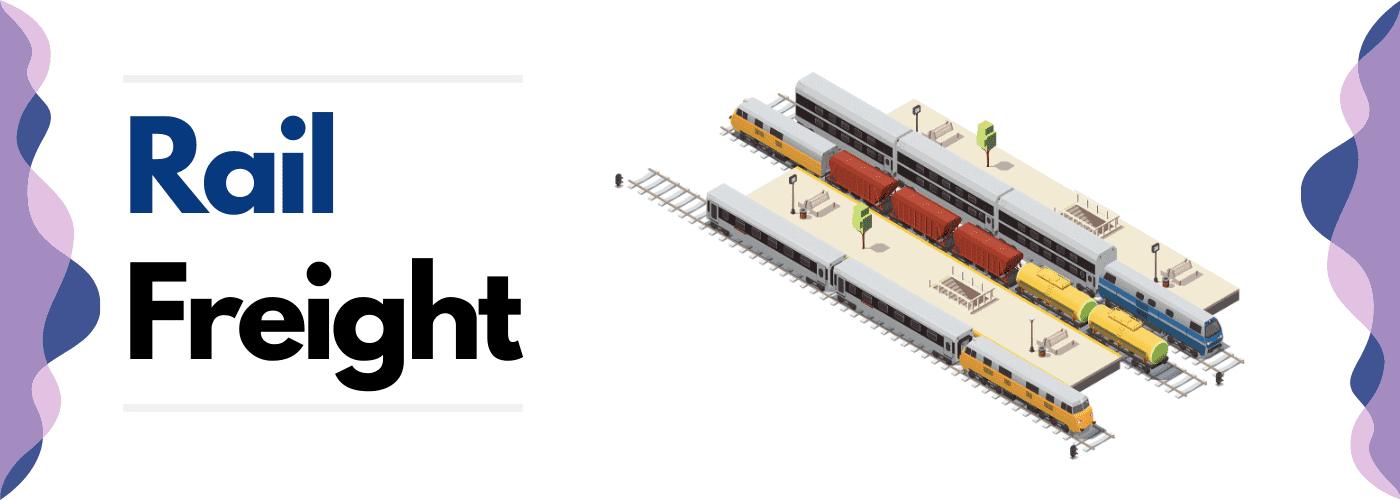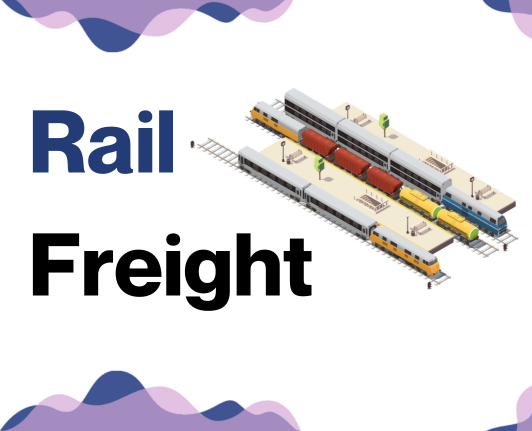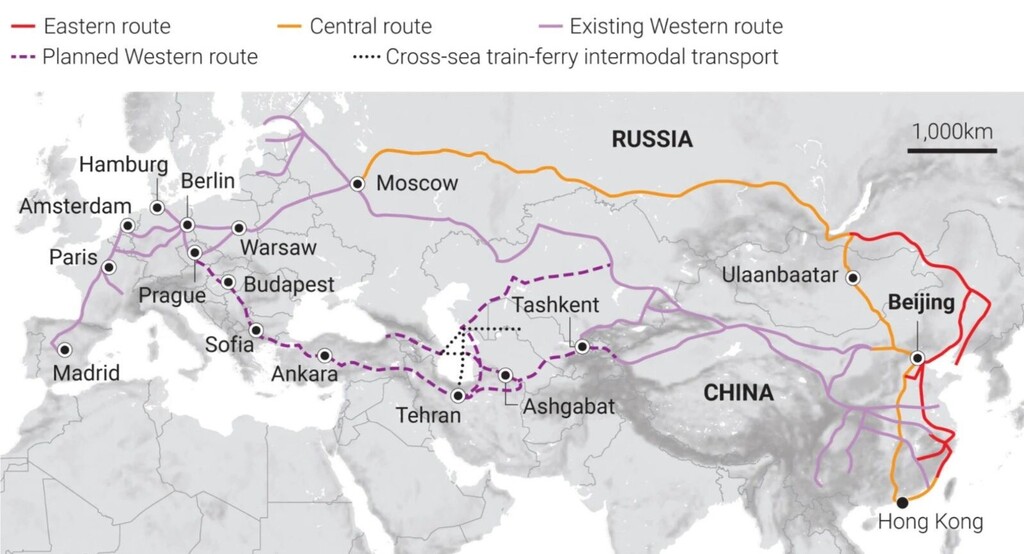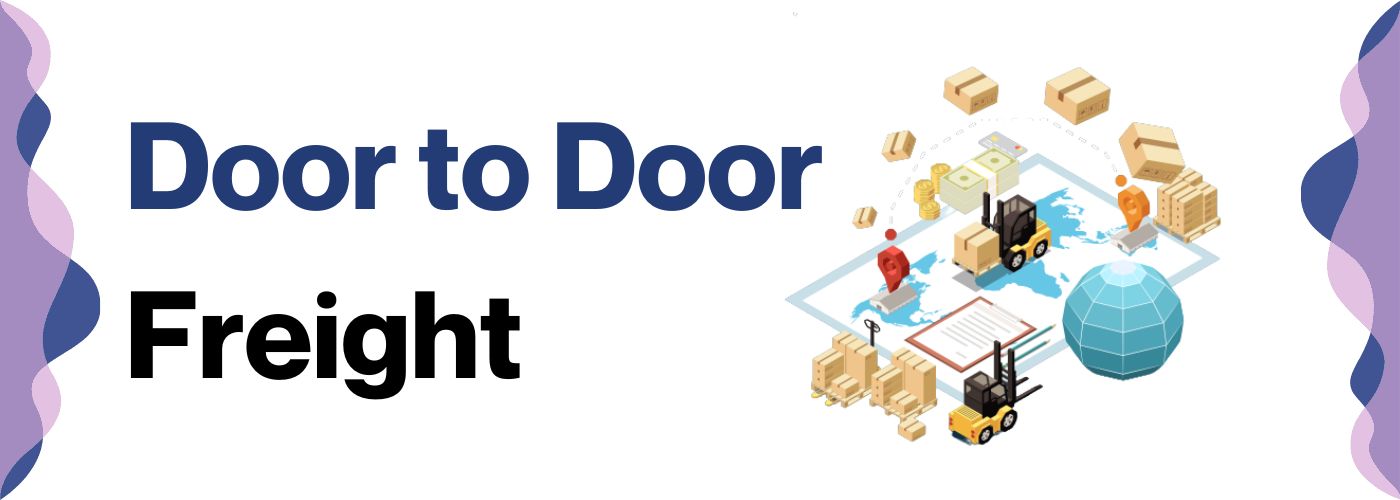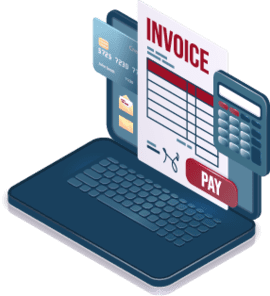Did you hear about the package that had a grand tour around the world? It probably took the concept of global shipping a bit too literally. Jokes aside, international freight transport, especially when it comes to shipping goods from China to Serbia, can be riddled with complexities like deciphering rates, decoding transit times, and untangling the web of customs regulations.
This guide will be your compass in this journey, shedding light on various freight options - air, sea, road, or rail - that you can leverage. We'll delve deep into customs clearance, duties, taxes, and dispense meaningful advice specific to businesses. If the process still feels overwhelming, let DocShipper handle it for you! As an international freight forwarder, we turn the challenges of the shipping process into palpable success, making your global business operations smoother than ever.
Which are the different modes of transportation between China and Serbia?
Shipping goods between China and Serbia is like a puzzle. Imagine your cargo as a piece that has to fit into the larger picture of geographical constraints and your business goals. Will it swim across seas, fly through the sky, hit the roads, or chug along the rails? Factors like distance and international borders can limit some options, making others more practical. So, we'll explore the best transport methods, putting your cargo – and business – in the strongest position for this unique East-to-South-East journey. Remember, picking the right transport can make or break efficiency, and ultimately, profitability.
How can DocShipper help?
Moving goods from China to Serbia? Let DocShipper take the wheel. We handle every detail from transport organization to customs clearance, making your shipping easier. Unsure? Our consultants are one call away. Time is ticking! Contact us now for a free estimate within 24 hours. We're here to streamline your overseas operations.
DocShipper Tip:Sea freight might be the best solution for you if:
- You are shipping large volumes or bulky items, as sea freight offers the most space at a cost-effective rate.
- Your cargo doesn't have an urgent deadline, as sea freight typically has longer transit times compared to air or rail.
- Your shipping routes are between major ports, allowing you to leverage the extensive global network of sea shipping lanes.
Sea freight between China and Serbia
Bridging two powerful economies, the trade route between China and Serbia is highly active, with ocean shipping serving as an essential link. China's bustling shipping ports are an amazing sight, with containers lined up, ready to make the voyage to Serbia's developing industrial centers. While sea freight might test your patience, in terms of time, it's the go-to option for high-volume goods, thanks to cost-effective solutions it offers.
However, it's not always smooth sailing. Many businesses hit choppy waters when trying to navigate the numerous difficulties and common mistakes that come with shipping between these nations. Imagine trying to play a sophisticated video game without any instructions. That's what shipping can feel like, but fear not! There are best practices, strategically designed like a roadmap, which will unfold in this section, making this daunting task much more manageable, and ultimately, successful.
Main shipping ports in China
Port of Shanghai
Location and Volume: The Port of Shanghai is located at the Yangtze River Delta. It's not only the world's busiest container port but also an essential logistical hub in China, accounting for a shipping volume of over 43.19 million TEUs in 2022.
Key Trading Partners and Strategic Importance: The key trading partners include the United States, Europe, and Asia-Pacific countries. Owing to its strategic position, it serves as the essential gateway for foreign trade, cementing its significance on a global stage.
Context for Businesses: If you're considering an expansion to western markets, the Port of Shanghai, with its vast network and immense shipping volume, can be a crucial component of your shipping strategy.
Port of Shenzhen
Location and Volume: Situated in Guangdong Province, the Port of Shenzhen is located right next to the Pearl River Delta. It boasts a shipping volume of approximately 25.2 million TEUs.
Key Trading Partners and Strategic Importance: The port’s key trading partners include Southeast Asia, Europe, and America. This port is known for its high efficiency and has a distinct position in high-tech industries.
Context for Businesses: If you're involved in technology-related sectors and need efficient shipment solutions, the Port of Shenzhen should definitely be a part of your logistics consideration.
Port of Ningbo-Zhoushan
Location and Volume: The Port of Ningbo-Zhoushan is in Zhejiang Province, bordering East China Sea. It’s one of the busiest ports worldwide, with a volume of about 26.35 million TEUs.
Key Trading Partners and Strategic Importance: The port primarily trades with the Americas, Europe, and Southeast Asia. It is strategically important for bulk goods, particularly crude oil and iron.
Context for Businesses: Businesses in the energy or construction sectors may find this port vital to their shipping plans, given its specialization in bulk goods.
Port of Guangzhou
Location and Volume: Located on the Pearl River, the Port of Guangzhou has a shipping volume of around 21.6 million TEUs.
Key Trading Partners and Strategic Importance: Key trading destinations include Oceania, Northeast Asia, and Europe. Known for its comprehensive logistics and trade services, this port plays a critical role in serving inland regions.
Context for Businesses: If your business serves Asia or depends on inland waterway transportation, you might find the Port of Guangzhou suits your logistics needs.
Port of Qingdao
Location and Volume: Positioned on the Yellow Sea, the Port of Qingdao logistics capacity is vast, handling around 21 million TEUs annually.
Key Trading Partners and Strategic Importance: The port’s major trading partners include Northeast Asia, Southeast Asia, and Europe. It ranks high in terms of cargo throughput, placing strategic importance on agricultural goods.
Context for Businesses: If you're in agriculture or looking to reach Asian and European markets, Qingdao Port is an essential entity in your logistics mix.
Port of Tianjin
Location and Volume: The Port of Tianjin is distinctive, being the maritime gateway to Beijing. Handing approximately 16 million TEUs, it proves essential to China's northern regions.
Key Trading Partners and Strategic Importance: The primary trading partners are Japan, South Korea, and European countries. It serves as a major hub for heavy industries and manufacturing sectors.
Context for Businesses: If your operation involves heavy equipment or if you seek effective access to North China, you might want to consider integrating the Port of Tianjin into your shipping strategy.
Main shipping ports in Serbia
Port of Belgrade
Located in the capital city of Serbia, this port is essential for facilitating domestic and international trade given its geographical position, with a shipping volume of about 1 million tonnes annually.
Key Trading Partners and Strategic Importance: The port has a predominant role in the trade activities with key European partners including Germany, Italy, and Hungary. It's also strategically important as it provides an efficient link between East and West Europe.
Context for Businesses: If you're considering expansion in European markets, the Port of Belgrade may be an instrumental part of your strategy, given its modern facilities and well-established connections with major European trade routes.
Port of Novi Sad
Located in the second largest Serbian city, this port handles approximately 1.6 million tonnes of goods per year.
Key Trading Partners and Strategic Importance: Handling mainly agricultural products, the port has strong trade ties with Italy, Hungary, and Germany. It also plays a strategic role in connecting the northern and southern regions of Serbia.
Context for Businesses: If your business is associated with the agriculture industry, the Port of Novi Sad can offer a robust network and efficient infrastructure for your shipments.
Port of Pancevo
Situated on the southern bank of the Danube River, this port handles around 2.5 million tonnes of cargo annually.
Key Trading Partners and Strategic Importance: Primarily dealing in oil and chemical industries, the port maintains strong trade relations with Russia and other Eastern European countries. It is also considered a vital port for the Balkan region.
Context for Businesses: If your business deals with oil or chemical products, incorporating the Port of Pancevo in your logistics could be a game-changer due to its specialized handling capabilities for such goods.
Port of Smederevo
Located on the Danube River, this port handles approximately 1 million tonnes of goods per year.
Key Trading Partners and Strategic Importance: The port primarily exports iron, steel, and agricultural products, maintaining strong trade ties with China and various European countries. The port notably houses Serbia’s only steel mill.
Context for Businesses: If your business involves iron or steel trade, the Port of Smederevo could be critical to your shipping strategy, given its specialized infrastructure for these industries.
As per your instructions, Serbia currently operates four main international shipping ports. These ports, being spread across the country, each have their unique benefits and trade ties. Understanding their individual features and strategic advantages can help you best optimize your logistics strategy and reach your market efficiently.
Should I choose FCL or LCL when shipping between China and Serbia?
Choosing between Full Container Load (FCL) and Less than Container Load (LCL), known as consolidation, for your sea freight journey from China to Serbia is a crucial decision. It influences not only your costs and delivery timeframe, but the overall success of your shipment as well. This section will break down the differences, pros, and cons of these two options, helping you make an informed choice that's perfectly fitted to your unique shipping needs. Shipping between countries, after all, isn't one-size-fits-all—it's about finding your tailored solution for effective international logistics.
LCL: Less than Container Load
Definition: Less than Container Load (LCL) shipping, as the name suggests, is used when your shipment doesn't fill an entire container. Your goods share space with others, splitting the consolidation cost which makes it price-flexible for lower volume consignments.
When to Use: You might consider this option for shipments that are less than 13/14/15 cubic meters (CBM). It offers a tailor-made solution when your freight doesn't warrant a whole container, ensuring you only pay for the space you use.
Example: For instance, if your company needs to ship 10 CBM of automotive parts from Guangzhou, China to Novi Sad, Serbia, you will find LCL shipment more cost-effective. You don’t have to wait until you have enough goods for a full container, thus keeping your supply chain flowing.
Cost Implications: The price of LCL freight is calculated partly on the volume rather than weight, and the pricing is variable due to the shared use of the container. It’s affordable for lower volume shipments. However, keep in mind it might be slightly higher per unit compared to Full Container Load (FCL) due to handling and logistics on either end.
FCL: Full Container Load
Definition: Full Container Load (FCL) shipping involves exclusively reserving a full container to ship your goods. It offers privacy and security because the container remains sealed from origin to destination.
When to Use: FCL is most cost-effective for high-volume shipments, typically over 13/14/15 cubic meters (CBM). The switch from Less than Container Load (LCL) to FCL can be seamless as the volume of shipped goods increases – ensuring cost savings in your operations.
Example: Let's say you're a manufacturer shipping 400 boxes of toys, each 0.04 CBM. Your total volume (16 CBM) makes an FCL shipping choice smarter. You can rest assured that your goods will stay in a 20'ft FCL container from the time they leave your warehouse in China until they arrive in Serbia.
Cost Implications: Although paying for a 20'ft or 40'ft FCL container might seem steep upfront, the per-CBM rate is cheaper compared to LCL. Prices might vary, thus a personalized FCL shipping quote fits the bill as they factor in your specifics like the nature of the goods, their volume, and the shipping distance. Your FCL shipping quote ensures transparency in freight costs, propelling wise financial decisions.
Unlock hassle-free shipping
Forget the complexities of sea freight, DocShipper is here to simplify it for you. With our expert team, we evaluate key factors such as volume, time sensitivity, and cost to guide your choice between consolidation and full container shipping from China to Serbia. We're committed to making cargo shipping an effortless experience for your business. Trust us for crystal clear advice—reach out now for a no-obligation, free cost estimation.
How long does sea freight take between China and Serbia?
Sea freight shipping between China and Serbia on average can take approximately 52 days. It's important to note that these transit times can fluctuate, reflecting factors such as the specific ports used in both countries, the weight and nature of the cargo, among other variables. To have a clear picture and accurate information about the shipping time, it's advisable to reach out to a freight forwarder like DocShipper for a customized quote.
| Port in China | Port in Serbia | Average Transit Time (days) |
| Shanghai | Belgrade | 17 |
| Shenzhen | Belgrade | 18 |
| Guangzhou | Belgrade | 17 |
| Qingdao | Belgrade | 16 |
*Please note that Serbia doesn't have a seaport, and the port listed is a river port. The times are average estimations, please contact DocShipper for a precise quote.
How much does it cost to ship a container between China and Serbia?
Shipping a container from China to Serbia brings up a common question - What's the cost? While an exact price is elusive - ocean freight rates are a wild ride! They swing with factors like Point of Loading, Point of Destination, the carrier chosen, the goods nature, and monthly market variations. Fear not! Our shipping specialists are masters of this sea. They'll dive into the depths of shipping costs, resurface with tailored quotes to ease your cargo journey. In our world, every case is a special one, no 'one-size-fits-all' here!
Special transportation services
Out of Gauge (OOG) Container
Definition: An OOG container, designed to carry out of gauge cargo that exceeds standard container dimensions, allows for the safe, efficient transport of oversized items.
Suitable for: Businesses transporting large equipment, heavy machinery, or vast, irregular-shaped cargo.
Examples: Large construction equipment, industrial machinery, large pipes or turbines.
Why it might be the best choice for you: If your goods do not fit within the sizes of a regular container and require special treatments, OOG container transport offers a reliable alternative to standard shipping methods.
Break Bulk
Definition: Break bulk is a method where goods are loaded individually without any containerization.
Suitable for: Businesses that need to transport oversized goods or cargo that can't be containerized because of its size or weight.
Examples: Construction materials, oil drums, or machinery parts.
Why it might be the best choice for you: Break bulk allows you to ship large, heavy, or oddly shaped cargo that can't be split into smaller loads, offering a feasible shipping solution for certain hard-to-handle goods.
Dry Bulk
Definition: Dry bulk refers to the shipment of loose cargo load such as grains or coal, in large quantities directly loaded into the vessel.
Suitable for: Businesses dealing with non-packaged, loose, dry commodities.
Examples: Coal, grain, ore, or cement.
Why it might be the best choice for you: Dry bulk is an optimal solution when you need to move vast quantities of non-packaged, granular goods at once without using individual containers, making it cost-effective for certain goods.
Roll-on/Roll-off (Ro-Ro)
Definition: Roll-on/Roll-off pertains to a vessel (ro-ro vessel) designed to carry wheeled cargo, like cars, that can roll onto the vessel on their own or with the support of a vehicle.
Suitable for: Businesses that transport automobiles, trailers, trucks, and heavy construction machinery.
Examples: New or used cars, tractors, buses, trucks, or large pieces of construction machinery.
Why it might be the best choice for you: Ro-Ro shipping might be your best bet if you're seeking an efficient, secure mode of transporting motorable cargo directly onboard a vessel, eliminating the need for dismantling.
Reefer Containers
Definition: Reefer containers, or refrigerated containers, are utilized for freight that needs to be transported at a consistent, often cold, temperature.
Suitable for: Businesses operating in the food, pharmaceutical, or any temperature-sensitive goods industry.
Examples: Fresh or frozen produce, meat, seafood, dairy products, or certain medicines.
Why it might be the best choice for you: If the shipment needs to remain within a specific temperature range during transit, opting for a reefer container can ensure the quality and safety of your products are maintained.
Lastly, consider DocShipper for your international freight needs. We offer customized solutions and can provide a free shipping quote in less than 24 hours, helping you to find the most suitable option for transporting your goods from China to Serbia.
DocShipper Tip: Air freight might be the best solution for you if:
- You are in a hurry or have a strict deadline requirement, as air freight offers the fastest transit times.
- Your cargo is less than 2 CBM (Cubic Meter), making it more suitable for smaller shipments.
- Your shipment needs to reach a destination that is not easily accessible by sea or rail, allowing you to tap into the extensive network of global airports.
Air freight between China and Serbia
Air freight between China and Serbia: imagine it like the express delivery of global trade. It offers unbeatable speed and reliability, making it your VIP ticket for small, high-value shipments. Think designer apparel, top-tier electronics, or urgent pharmaceuticals; they're the kind of jet-setters that benefit from the swift journey of air freight, saving both time and money with no room for delays.
But here's the rub: many shippers stumble by missing details that could cost them a pretty penny. When calculating their shipping costs, they may use a flawed weight formula, turning their estimates upside down. It's like trying to guess the weight of an elephant based on its foot size—it just doesn’t add up. Misjudging these best practices can quickly make your air freight operation an expensive affair. In the following sections, we'll shed light on avoiding these pitfalls to transform your freight practices from floundering to flying high.
Air Cargo vs Express Air Freight: How should I ship?
Shipping goods from China to Serbia and puzzled over whether to go with air cargo or express air freight? Simply put, air cargo bundles your goods on a shared airline - it's like booking an economy seat for your shipment, while express air freight gives your goods a dedicated plane, kind of like a private jet. The following piece will help you decide the best fit for your business, keeping in mind factors like cost, speed, and volume. Let's delve into the specifics, shall we?
Should I choose Air Cargo between China and Serbia?
Selecting air cargo for your shipments between China and Serbia could be a tremendous advantage. Airlines such as Air China and Air Serbia offer reliable and cost-effective services, apt for volumes over 100kg-150kg (220lb-330lb). Keep in mind though, that this mode may lead to more extended transit times due to the airlines' fixed schedules. If your budget can accommodate this, air cargo presents an attractive option for ensuring your goods reach their destination, tailored to larger shipment weights.
Should I choose Express Air Freight between China and Serbia?
Choosing Express Air Freight can be ideal for smaller shipments under 1 CBM or 100/150 kg (220/330 lbs) in weight. This specialized service operates cargo-only flights, ensuring speedy delivery. Renowned firms such as FedEx, UPS, and DHL offer reliable international services. If you need fast transportation for your shipment from China to Serbia without delay, then opting for Express Air Freight can be a fitting choice. Your goods will be in safe hands, with professionals ensuring smooth customs clearance, prompt pickups, and timely deliveries.
Main international airports in China
Beijing Capital International Airport
Cargo Volume: Approximately 2.12 million metric tonnes per year.
Key Trading Partners: Major trading partners include the U.S., Japan, South Korea, and Germany.
Strategic Importance: As the largest international airport in China, it serves as a key hub for goods entering and exiting the country.
Notable Features: The airport boasts state-of-the-art cargo handling facilities, and a dedicated cargo terminal operated by Air China Cargo.
For Your Business: The Beijing Airport might be a prime choice if your company is brandishing out to or from northern China or if you have large cargo volumes as it can handle heavy cargo traffic efficiently.
Shanghai Pudong International Airport
Cargo Volume: Annually, it handles more than 3.6 million metric tonnes of cargo.
Key Trading Partners: Significant trade partners include the U.S., Japan, South Korea, Australia, and European Union countries.
Strategic Importance: This is China's busy cargo hub and fits perfectly for goods bound for Eastern China and beyond.
Notable Features: Home to China's largest cargo airline, China Cargo Airlines, and it is an essential hub for both DHL and FedEx.
For Your Business: The Shanghai Pudong Airport is a primary choice if your business revolves around frequent e-commerce transactions as the airport excels in handling express shipments.
Guangzhou Baiyun International Airport
Cargo Volume: Around 1.83 million metric tonnes annually.
Key Trading Partners: Major trading partners are the U.S., European Union, Australia, Japan, and Southeast Asian countries.
Strategic Importance: It is Southern China's largest and busiest airport and a crucial gateway for China's Belt and Road initiative.
Notable Features: The airport houses advanced cold chain facilities, perfect for perishable goods, and it is an UPS hub in Asia.
For Your Business: If your company trades goods requiring temperature control or rapid shipping to Southeast Asia or the U.S., Guangzhou Baiyun International Airport is an excellent choice.
Shenzhen Bao’an International Airport
Cargo Volume: Manages over 1 million metric tonnes of cargo each year.
Key Trading Partners: It majorly deals with the U.S, Japan, South Korea, and Southeast Asian nations.
Strategic Importance: Serving the bustling Pearl River Delta area, it's an essential link for high-tech goods and e-commerce.
Notable Features: Offers advanced handling facilities and serves as the Asia-Pacific hub for UPS.
For Your Business: As Shenzhen is the bedrock of China's tech industry, this airport is suited to businesses in the sector, particularly if your business involves the export or import of high-tech items.
Chengdu Shuangliu International Airport
Cargo Volume: Handles over 660,000 metric tonnes of cargo per year.
Key Trading Partners: Significant trading partners are the European Union, the U.S., Australia, and Asia.
Strategic Importance: It's a vital gateway for the fast-growing Western China regions, and an important terminal under the Belt and Road initiative.
Notable Features: It serves as a hub for Air China and Sichuan Airlines, with an excellent network of routes, particularly to Western countries.
For Your Business: If you’re looking to tap into economies in western China, Chengdu Shuangliu International is likely the most viable air cargo option for your business with its wide reach of destinations.
Main international airports in Serbia
Belgrade Nikola Tesla Airport
Cargo Volume: With an annual cargo volume exceeding 22,500 tonnes in 2019, this is the busiest cargo airport in Serbia.
Key Trading Partners: Major trading partners include China, Russia, Germany, Italy, and the United Arab Emirates.
Strategic Importance: As the largest and busiest airport in Serbia, it serves as a significant hub for cargo movement in Southeast Europe. Its strategic location enhances connectivity with other European countries, Asia, and the Middle East.
Notable Features: Boasts a modern Cargo Center and a Free Zone, offering tax and customs incentives to businesses. Facilitation of all types of freight, including general, special, and dangerous goods.
For Your Business: Belgrade Nikola Tesla Airport may be strategically beneficial for your business if you're exporting goods to or importing from Southeast Europe, given its connectivity. The airport's comprehensive facilities and Free Zone benefits may also effectively reduce costs and streamline your logistics process.
Niš Constantine the Great Airport
Cargo Volume: Though smaller than Belgrade, this airport is growing rapidly with increased cargo traffic in recent years.
Key Trading Partners: Key trading partners primarily consist of European nations, including Germany, Italy, Austria and Switzerland.
Strategic Importance: Located in the southern part of Serbia, Niš Constantine the Great Airport provides a strategic gateway to the Balkan region.
Notable Features: Serves diverse airlines and has excellent road connectivity, ensuring efficient transport of cargo to other parts of Serbia and neighboring countries.
For Your Business: Niš Constantine the Great Airport could be a fruitful option for businesses seeking budget-friendly shipping to Southeast Europe, given its lower operating costs. Its growing capacity and expansive regional connectivity are promising for businesses planning to strengthen their foothold in the Balkans.
How long does air freight take between China and Serbia?
Transporting cargo via air freight between China and Serbia typically takes between 6–8 days. However, it's crucial to note that this is an average duration - actual transit times can fluctify, largely influenced by factors such as the originating and destination airports, the weight and dimensions of your shipment, plus the nature of the goods being shipped. For the most accurate shipment times tailored to your specific shipping needs, we strongly recommend consulting a seasoned freight forwarder like DocShipper.
How much does it cost to ship a parcel between China and Serbia with air freight?
The cost of shipping an air freight parcel between China and Serbia can vary greatly, typically ranging from $3 to $8 per kg. But it's essential to note that a multitude of factors can impact the final shipping quote. Your parcel's weight, dimensions, and the nature of the goods, plus its pickup and final delivery locations, all can play a role.
Therefore, stating a definitive price here would be misleading. We encourage you to connect with our experienced team who can provide a tailored quote based on your specific needs. This is done case-by-case to ensure you get the most cost-effective solution. Contact us to receive your free quote within 24 hours.
What is the difference between volumetric and gross weight?
Gross weight refers to the total weight of your shipment, including the product, packaging, pallet, and any other materials. On the other hand, volumetric weight, sometimes called dimensional weight, is a theoretical weight that considers the amount of space your shipment occupies on an aircraft.
In Air cargo, the formula for calculating volumetric weight is Length (m) x Width (m) x Height (m) divided by a standard volumetric factor, commonly 6000 for air cargo. Gross weight is simply measured on a scale in kilograms (kgs).
For Express Air Freight services, the volumetric weight formula remains the same, but the standard volumetric factor changes to 5000.
To illustrate, consider a shipment with actual gross weight of 30kgs (66 lbs) and dimensions of 1.5m x 2m x 1m. In Air cargo, the volumetric weight would be (1.5 x 2 x 1) / 6000 = 0.5 kgs (or 1.1 lbs). For Express Air Freight, the volumetric weight would be (1.5 x 2 x 1) / 5000 = 0.6 kgs (or 1.32 lbs).
Understanding these calculations is crucial as air freight carriers will charge you based on whichever weight (gross or volumetric) is higher. Therefore, these measurements play a significant role in effective cost management and logistical planning.
DocShipper tip: Rail freight might be the best solution for you if:
- You are looking for a cost-effective transportation method for large volumes.
- Your shipping route is well-connected by rail, providing a reliable and environmentally friendly option.
- Your cargo's destination and origin are near rail terminals, minimizing the need for additional road transportation.
Rail freight between China and Serbia
Did you know that the China-Serbia rail freight line is often dubbed as the 'Silk Road on Steel Wheels'? This history-rich route was first established in the trade-fueled era of the early 20th century, linking China with Serbia and several European nations in-between. From electronics to textiles, a diverse array of goods speed along this line.
This rail connection has engaged China and Serbia in a dynamic waltz of trade and economic cooperation, resonating even today. But remember, every dance has its steps, and shipping via rail isn't always a quickstep. While cost-effective, rail transit times can stretch longer than air or sea freight.
Clearing customs on this spectacular route, though meticulously structured, can present a few hurdles. But worry not! It's all a part of the vibrant tapestry of international trade. So buckle up, and ponder: does the rhythm of rail freight match the melody of your shipping needs?
What are the main train stations between China and Serbia?
Shanghai South Railway Station, China
Known as the 'Gate of the Yangtze River', this station is a hub for shipping goods in Eastern China. It is well connected with other international railway routes, offering businesses a gateway to many countries including Russia and Mongolia and handling staggering 35 million tons of cargo annually. This station's extensive rail network offers your business potential to extend your trade reach.
Chongqing Railway Station, China
Situated in the economic heart of western China, this station links to a network that spans across Central Asia all the way to Europe. Besides the fact that it handles about 30 million tons of cargo annually, the dominance of the station in China-Europe trade routes makes it a strategic choice for shipments to Serbia.
Shenzhen North Railway Station, China
One of the busiest railway stations, connecting southern China to other international routes. It is strategically located in China's tech industry central, making it ideal if your business is dealing in consumer electronics. This station boasts an annual cargo volume of 28 million tons, with key trading partners being southeast Asian countries.
Dalian Railway Station, China
This northeastern port city station has prime importance due to its large cargo handling capacity and connectivity to international routes. It handles over 20 million tons of goods annually. Its proximity to ports offers a convenient option if your business entails multimodal shipping.
Beograd Centar Station, Serbia
This is the primary railway station of Serbia and stands as the nation's epicenter for rail freight transport. Given its pivotal location, it connects with a multitude of European railway networks, making it an optimal choice for businesses aiming at a wider market reach.
Subotica Railway Station, Serbia
Located near the Hungarian border, this station offers easy access to the European Union market. If your business involves extensive trading with EU countries, this station will certainly be of strategic importance.
Niš Railway Station, Serbia
This station has robust connections to southern Europe. If your freight shipment routes involve Greece or Macedonia, Niš station could offer you a cost-effective and efficient solution.
Pančevo Main Station, Serbia
Situated near the industrial city of Pančevo, this station is ideal for businesses engaged in heavy industries like petrochemicals. The station's good connectivity to other international rail networks further enhances its strategic importance.
All these stations play different roles depending on their location, key trading partners and capacity. Identifying the station that fits your business needs could make a significant difference in your shipping strategy.
How long does rail freight take between China and Serbia?
Rail freight between China and Serbia takes an average of around 15 days, though transit times can vary greatly due to factors such as route, weather, customs clearance, and border crossings.
Here is a list of rail networks linking China and Europe, including estimates for transit times and departure frequencies. Remember, these are rough estimates; real-world transit can often be unpredictable.
- Zhengzhou to Hamburg (Germany): ~ 15-17 days, Departs Daily
- Zhengzhou to Munich (Germany): ~ 17-18 days, Departs Monday and Friday
- Zhengzhou to Liege (Belgium)/Milan (Italy): ~ 20 days, Departs Monday, Thursday and Friday
- Chongqing to Duisburg (Germany): ~ 16-17 days, Departs Monday/Friday
- Yiwu to Hamburg (Germany): ~ 16-18 days, Departs Monday/Thursday/Friday
- Yiwu to Duisburg (Germany): ~ 16-18 days, Departs Monday/Thursday/Friday
- Yiwu to Madrid (Spain): ~ 20 days, Departs Monday/Thursday/Friday
- Wuhan to Hamburg (Germany): ~ 17-19 days, Departs Saturday/Wednesday/Thursday
- Wuhan to Duisburg (Germany): ~ 17-19 days, Departs Saturday/Wednesday/Thursday
- Chengdu to Tilburg (Netherlands): ~ 18 days, Departs Wednesday/Sundayy
- Suzhou to Hamburg (Germany): ~ 18-20 days, Departs Sunday
- Suzhou to Duisburg (Germany): ~ 18-20 days, Departs Sunday
- Xi'an to Duisburg (Germany): ~ 18-20 days, Departs Wednesday/Thursday/Friday/Saturday
What are the advantages of rail transport between China and Serbia
Rail transport bridges the gap between speed and cost, offering an efficient mode of transport from China to Serbia. Cheaper than air freight yet faster than sea freight, it's a great compromise. For instance, shipping bulk commodities like metals or large quantities of goods? Rail transport could be your saving grace, providing quality service at a lower cost. Similarly, if your business is time-sensitive but lacks the budget for air freight, consider rail. Trains from China to Serbia typically take around two weeks, quicker than the month-long sea voyage.
To illustrate, a Beijing-based toy manufacturer, aiming for a cost-effective yet timely European market entry, found rail transport was their ideal solution. Remember, this option is not just cost-and-time effective, but also environmentally friendly, emitting less CO2 compared to air transport. So, if a balance of speed, cost, and sustainability matters, rail freight may be your answer.
How much does shipping goods by train between China and Serbia cost?
Pinpointing an exact cost for rail freight between China and Serbia can be a bit like nailing jelly to a wall. Here's why: costs wiggle around depending on the nature of your shipment, its size, weight, and the pickup and delivery specifics. Also, keep in mind things like customs duties and insurance. No two shipments are identical, much like snowflakes!
So, at our end, we don't pluck prices out of thin air. We roll up our sleeves, consult the spreadsheets, and quote you a fair price based on your unique circumstances. You're assured of our commitment to finding the best rates for you! Don't just take our word for it, though. Get in touch and let's get a free quote on your desk in less than 24 hours.
DocShipper tip: Door to Door might be the best solution for you if:
- You value convenience and want a seamless shipping process, as door-to-door takes care of every step from pickup to delivery.
- You prefer a single point of contact, as door-to-door services typically provide a dedicated agent to handle all aspects of the shipment.
- You want to minimize the handling of your goods, reducing the risk of damage or loss, as door-to-door minimizes transitions between different modes of transport.
Door to door between China and Serbia
International door-to-door shipping symbolizes a seamless journey, taking goods from China straight to a Serbian doorstep with minimal hassle involved. This method promises convenience, cost-effectiveness, and time-saving potential. So, ready to unmask the convenience of transferring goods across continents? Let's dive in!
Overview – Door to Door
Stressed by intricate shipping procedures from China to Serbia? Door-to-door shipping has you covered! It simplifies complexities, from wrapping up customs paperwork to ensuring timely delivery at your doorstep - a fuss-free logistics solution. The route isn't without its challenges; setbacks like unexpected delays can impact timelines.
Yet, the peace of mind in knowing experts like DocShipper handle it outweighs these rare instances. Being the service most favored by our clients, we assure you, it's a viable route to streamline your international freight journey. Dive in to learn more about this comprehensive, practical approach.
Why should I use a Door to Door service between China and Serbia?
Ever juggled flaming torches while riding a unicycle? No? Well, managing cargo transportation yourself can feel just like that! Here are the top five reasons why a Door-to-Door service between China and Serbia will keep your life blaze and wobble-free:
1. Stress-Off The Charts: Door-to-Door liberates you from the logistical labyrinth. The freight forwarder manages goods right from pick-up through to final destination, so you don’t have to.
2. Clockwork Precision: Timeliness is next to godliness in our world. Urgent shipments thrive on the efficiency of Door-to-Door services, ensuring they arrive punctually without finger-biting delays.
3. Special Cargo, Special Care: Complex cargo needs kid gloves! Rest easy knowing that special care is given to complicated shipments by the capable hands of logistics experts.
4. Hassle-Free Customs: Clearing customs can often feel like a labyrinth. Bypass the maze and stress with Door-to-Door service, as handling customs procedures is part of the package.
5. Last Mile, No Sweat: The 'final stretch headache' is real! Door-to-Door service takes care of trucking until the final destination, adding a sumptuous layer of convenience.
In a nutshell, Door-to-Door service is the ultimate stress-eraser offering precision, specialized care, customs handling expertise, and perhaps the biggest perk of all - a blissful logistical experience.
DocShipper – Door to Door specialist between China and Serbia
Embark on a hassle-free freight forwarding journey from China to Serbia with DocShipper. Your demands are our commands - from packaging to customs clearance, and utilizing all shipping method - everything's handled with expertise. Plus, enjoy the luxury of your own dedicated Account Executive for markedly smooth communication. Reach out to us for a no-obligation estimate within 24 hours or directly consult with our team for free. We're here, enabling seamless global commerce.
Customs clearance in Serbia for goods imported from China
Understanding customs clearance is crucial when shipping goods from China to Serbia. This is a complex process that could lead to unexpected fees and charges if not handled properly. Knowing all about customs duties, taxes, quotas, and licenses can protect your shipment from getting stuck in customs, thus saving you from potential business disruptions.
What follows will guide you through these labyrinthine processes with ease. As an added stride, our team at DocShipper can assist with every step, regardless of what kind of goods you’re shipping. Avoid any costly surprises by providing your goods' origin, value, and HS Code for a precise estimate for your project. Let's ease your shipping journey together.
How to calculate duties & taxes when importing from China to Serbia?
Taking the leap from trading within your local region to importing goods from China to Serbia comes with the rewarding prospect of boosting your business, but it also introduces new fees in the form of duties and taxes.
To calculate these financial obligations, it's essential to familiarize yourself with several key components. Firstly, you have to identify the country of origin - it's not where the shipment comes from, but rather where the goods were actually manufactured or produced. This information is crucial as it forms the basis for subsequent customs calculations and allows for the correct application of international trade agreements.
Your next step would be to determine the Harmonized System Code, or HS Code, a globally standardized system of names and numbers used to classify traded products. You will also need to figure out the Customs Value, which includes not just the price of the goods, but the cost of transport, insurance, and any other expenses incurred to the point of entry into Serbia.
Then, consider the Applicable Tariff Rate, which can vary depending on the type, quantity, and sometimes even the packaging of the goods. And bear in mind that there may be other taxes and fees that apply to your products, especially if they fall under certain regulated categories or are subject to specific excise duties.
Once you have these details, the process becomes much simpler. You're armed with all the crucial elements needed to unravel the complex tapestry of international trade. But remember, every import journey starts from the origins of your products.
Step 1 - Identify the Country of Origin
First up, it's crucial to pin down the true origin of your goods. Why so? Here's why:
1. Trade Agreements – China and Serbia have multiple bilateral trade agreements, likely to impact the duty rates you'll pay.
2. Currency Conversions – Knowing your country of origin allows for accurate currency conversions in importing scenarios.
3. Legal Requirements – It's a requirement by law to state the country of manufacture or production.
4. Import Restrictions – Serbia implements specific restrictions on imports from certain nations, which could include China.
5. Accurate Tariffs – An accurate country of origin highlights the right Harmonized System (HS) code, hence the right customs duties.
Always use the 'Made in' label to identify the country of origin. Trade agreements between China and Serbia, like the China-CEE Agreement, can reduce customs, making careful origin tracking advantageous. For peculiar rules or restrictions on some Chinese goods, check Serbia’s Customs website - it's a practical tool. This diligent approach to the country of origin helps avoid unexpected costs and, indeed, complaints. Remember, keep an eye on those global trade winds - they constantly shift!
Step 2 - Find the HS Code of your product
Understanding your product's Harmonized System (HS) code is an absolute necessity for international shipping. These codes are six-digit identifiers established by the World Customs Organization, which are used globally to classify and define commodities. The code determines how these commodities are taxed upon entering the destination country.
One common method for identifying the HS code of your product is to ask your supplier. They are usually very familiar with the products they're exporting and the relevant regulations tied with them.
However, if this isn't an option, don’t worry. We're here to walk you through a simple step-by-step process to locate your product's HS code:
1. Visit the online Harmonized Tariff Schedule.
2. Enter the name of your product into the search bar.
3. Once the results appear, check the 'Heading/Subheading' column for your product and voilà, there's your HS code.
A word of caution: accuracy is vital when picking the HS code. A code that doesn’t match your goods correctly can lead to customs delays and potential penalties. This can disrupt your shipping timelines and inflates costs.
To break things down a bit further, here's an infographic showing you how to read an HS code.
Step 3 - Calculate the Customs Value
If you're thinking customs value and product value are the same, think again. They're not identical; here's why. Customs value, also known asm the CIF (Cost, Insurance, Freight) value, encompasses more than just your product's price. It's an essential concept when importing goods from China to Serbia, and it determines how much you shell out in customs duties.
Imagine you bought items worth $10,000, shelled out $1000 for shipping, and your insurance came to $500. Your CIF (Customs) value tallies up to $11,500. The customs officials use this total to calculate the import tax you'll pay, so correctly determining it will prevent any nasty surprises at the Serbian border. Accurate estimations can help you budget wisely, ensuring smooth and cost-effective transportation of your goods.
Step 4 - Figure out the applicable Import Tariff
Import tariffs are essentially a tax on imports, which are imposed to protect domestic producers from foreign competition by raising the price of imported goods. Serbia uses the Harmonized System (HS) of tariff nomenclature, a globally standardized system to classify traded goods for customs purposes.
To identify the applicable import tariff, you'll need to look up your product's HS code in the relevant customs tariff database. For Serbia, this can be accessed via the Serbian Customs Administration website or the TARIC system.
To use the TARIC System - European Customs, you simply need to:
1. Enter the HS code you previously confirmed, along with the country of origin - China, in this case.
2. Review the duties and taxes that apply to your product.
Let's consider an example to illustrate. Suppose you are importing bicycles from China. The HS code for bicycles is 871200. This code, when entered into the TARIC system with China as the country of origin, would yield the tariff rate. If it returns a tariff rate of 15%, and the total cost, insurance, and freight (CIF) value for your shipment is $10,000, your import duties would be calculated as follows: 15% of $10,000 = $1,500.
Remember, calculating duties is a vital step as it significantly impacts your total landed cost, affecting profitability. Therefore, accurate calculation of tariffs is paramount in international logistics planning.
Step 5 - Consider other Import Duties and Taxes
Once your goods have cleared the standard customs requirements, don't forget you may still have additional duties and taxes to consider. These can vary, based on the origin of the goods and their nature.
For instance, excise duty applies to certain products like tobacco or alcohol, and if those are part of your shipment from China to Serbia, an additional charge will be levied. Similarly, anti-dumping taxes may apply to goods sold at significantly lower prices than in their domestic market, preventing unfair competition.
However, one of the most significant charges to consider is Value Added Tax (VAT). For Serbia, the standard VAT rate is 20%, but for some goods it is reduced to 10%. This means, if you're importing goods valued at $5000, you should be prepared for a VAT charge of $1000 (20% standard rate) or even $500 (10% reduced rate) on top of the other charges.
Remember, these are illustrative examples and actual rates may vary. It's essential to consult with a customs expert or freight forwarder to understand the full scope of potential charges. This helps to avoid unexpected costs and ensures a more efficient and economical shipping process.
Step 6 - Calculate the Customs Duties
Calculating customs duties for your imports can seem like a daunting task, but that's why we're here. It starts with determining the 'Customs Value' or CIF (Cost, Insurance, Freight), which is the cost of your goods plus transportation and insurance charges. The formula used to calculate your total customs duties entirely depends on the types of charges you are subject to: customs duties, VAT, anti-dumping taxes, and even excise duty.
For goods hit with just customs duties, it's simple. Let's say the CIF of your goods from China to Serbia is $10,000, and the customs duty is 10%. Your total customs duty is then $1,000.
But let's throw VAT into the mix using the same CIF, at a rate of 20%. The base for VAT isn't just the CIF, it also includes the customs duty you just calculated. Hence, your VAT would be $2,200, making your total customs charges $3,200 ($1,000 in duties + $2,200 in VAT).
Now, suppose you have a commodity that also attracts anti-dumping taxes of 5% and excise duty of 2%. Combining all of these, your total customs charges jump to $3,740 ($1,000 in duties + $2,200 in VAT + $500 in anti-dumping taxes + $40 in excise duty).
Understanding these calculations can save your business significantly, as it gives you transparency on costs and helps you price your goods accurately. At DocShipper, we're committed to helping you seamlessly navigate the sea of customs clearance and ensure you don't pay a penny more than you must. Get in touch with us today for a free quote, and we promise a response in less than 24 hours. Your customs worries are ours to manage!
Does DocShipper charge customs fees?
Perhaps you've been wondering about customs fees and how they work. Simply put, DocShipper, as a trusted custom broker in China and Serbia, helps facilitate your shipping process but doesn't charge customs duties. Those payments go straight to the government. You might be thinking, so where do DocShipper's customs clearance fees come in? Think of this as the charge for helping you navigate the complexities of customs. And don't worry about transparency - we provide all official documents from the customs office, demonstrating that what you're paying is strictly the government's charges. It's a simple, straightforward process!
Contact Details for Customs Authorities
China Customs
Official name: General Administration of Customs of the People's Republic of China
Official website: english.customs.gov.cn/
Serbia Customs
Official name: Customs Administration of the Republic of Serbia
Official website: www.carina.rs/en.html
Required documents for customs clearance
Managing customs clearance can be a maze of paperwork. Get ready to demystify the most crucial documents: Bill of Lading, Packing List, Certificate of Origin, and Documents of Conformity (CE standard). This guide will help you gain the confidence to tackle customs bureaucracy head-on, ensuring your shipments move smoothly across borders.
Bill of Lading
Navigating International shipping between China and Serbia? Your 'Bill of Lading' (B/L) is a must-have. This trusted document signals the handover of ownership from seller to buyer. Picture yourself accepting the keys to your new apartment, that's what B/L does in cargo terms! When your cargo voyages via sea, the B/L becomes your golden ticket. For air shipments, the Air Waybill (AWB) plays a similar role.
Go digital with the 'telex' release to save time and trees. Say goodbye to waiting for physical copies and embrace faster, greener shipping. Just remember, without your B/L or its AWB equivalent, it's like trying to check into a hotel room that’s not been booked - frustrating and easily avoidable! So, take control, equip yourself with the right document, and ensure a smooth sailing (or flying) experience for your goods!
Packing List
Just imagine you've packed a bag for a vacation but can't remember half of what's inside. The same goes for shipping; too many goods and so many descriptions. That's where your Packing List saves the day. Acting as an itemized 'memory' for your shipment, it's a necessary document for customs clearance when you're shipping between China and Serbia, be it sea or air freight.
It's your responsibility to ensure all information is accurate and updated, detailing the types, quantities, and values of your goods. Think about that one time you misplaced a favorite shirt. Minus the disappointment, multiply the financial loss - yes, inaccuracies in your Packing List could have such an impact. So, careful documentation is a need and not just a choice. Accuracy today could save you from costly delays tomorrow.
Commercial Invoice
When shipping goods from China to Serbia, your Commercial Invoice is a non-negotiable document. It's more than just a financial summary; it serves as a literal passport for your goods at customs. Wondering what to include? Essentials you can't skip are the buyer and seller details, detailed product description, HS Codes, shipment value, and terms of delivery. Ensure everything matches with your packing list to avoid customs hassles.
Remember, an accurate Commercial Invoice not just expedites your customs clearance, but also enables you to avoid under- or over-paying duties. To help you tackle this challenge, consider employing a good freight forwarder who can cross-check your documents and save you time, money, and headaches during the shipping process. It’s one less thing to worry about in your China-Serbia trade journey!
Certificate of Origin
Initiating a shipment from China to Serbia? It's key to have your Certificate of Origin intact. This document proves the birthplace of your goods, with China as the country of manufacture called out. Why's that vital? One word - customs. Serbia often offers preferential customs duties for goods made in specific countries.
Let's say you're shipping power tools. With a duly filled Certificate of Origin, your goods will be on a fast track through customs, often with better duty rates. Without this, your shipment can face unnecessary delays or higher costs. Remember, every detail counts in the international shipping game. This document is your ace to navigate the customs maze smoothly and cost-effectively.
Certificate of Conformity (CE standard)
Understanding the Certificate of Conformity (CE standard) is crucial when shipping goods from China to Serbia. The CE marking attests that your product meets all safety, health, and environmental protection standards, required by the European Economic Area (EEA). Unlike quality assurance, that ensures compliance with proprietary specifications, CE certification confirms adherence to public standards.
For example, a toy from China must pass specific tests and carry the CE marking before it's accepted in the Serbian market. Do note, although Serbia is not part of the EEA, it still requires CE for certain products. As a business, you should verify your products' classifications to determine if CE applies. Notably, the CE standard is somewhat similar to the FP mark in the US but don't interchange them. Following these guidelines, you'll bypass customs smoothly and remain compliant.
Your EORI number (Economic Operator Registration Identification)
When shipping goods from China to Serbia, your EORI number is a key document for successful customs clearance. It acts as your business's unique identifier within the EU's customs system, crucial for tracking imports and exports. How to get one? Simply register with your national customs authority – it's a straightforward process.
Just remember, without an EORI, the risk of shipment delays escalates dramatically. So ensure you've got it sorted well before your goods are in transit. It's all about ensuring smooth sailing for your international trade. Note, Serbia despite not being an EU state, still requires EORI for goods entering its borders from non-EU countries like China.
Get Started with DocShipper
Tired of the customs clearance maze between China and Serbia? Let DocShipper turn your confusion into clarity! No more poring over documents or navigating bureaucratic rules. Our expert team will handle each step so you can focus on your business. Need help? Reach out now and receive a free, no-obligation quote within 24 hours. Shipping made stress-free with DocShipper!
Prohibited and Restricted items when importing into Serbia
Shipping goods into Serbia? It's a smooth sail if you know what's off-limits! Missteps with prohibited or restricted items can spike costs and cause delays. Learn the ins and outs to avoid running afoul of Serbian customs laws and ease your import process.
Restricted Products
- Agricultural Products: To import agricultural products into Serbia, you'll need a Phyto-Sanitary Certificate from the Ministry of Agriculture, Forestry, and Water Management of Serbia.
- Petrochemicals: For petrochemicals, a special permit must be procured from the Ministry of Mining and Energy of Serbia.
- Pharmaceuticals: If you're shipping pharmaceuticals, you have to obtain a Medicines and Medical Devices Agency of Serbia (ALIMS) permit.
- Firearms and Ammunition: To import firearms and ammunition, visit the Ministry of Interior's website and apply for a permit.
- Industrial Explosives: The Serbian Ministry of Defense is responsible for issuing the permit for the transfer of industrial explosives.
- Waste materials: Any waste materials import requires a special permit from the Serbian Environmental Protection Agency. You can apply through their website.
- Radioactive materials: You'll need authorization from the Serbian Radiation and Nuclear Safety and Security Directorate, head over to their website to apply.
- Protected Animal and Plant Species: All products derived from protected species require a Convention on International Trade in Endangered Species (CITES) permit. Initiate your application process here.
- Art and Antiques: If you intend to ship art pieces or antiques, you'll require an export license from the Ministry of Culture and Information of Serbia.
- Encrypted technology: For encrypted technology products, an approval from the Directorate for Measures and Precious Metals is mandatory. .
Prohibited products
- Narcotics and illegal substances: This includes but is not limited to marijuana, cocaine, heroin, and other drugs not prescribed by a certified medical professional.
- Arms and ammunition: Except under specific circumstances and with the proper permit.
- Dangerous chemicals: Any substances that may pose a serious risk to public safety.
- Certain animal species: Many endangered species, dead or alive, as well as their by-products, are forbidden.
- Plants and plant products: Including cut flowers, fruits, and seeds without a phytosanitary certificate.
- Counterfeit currency: Any currency that isn't recognised by the Serbian National Bank.
- Indecent or obscene materials: This can include certain print media, DVDs, or other items of an adult or explicit nature.
- Precious metals and stones: It's prohibited without the correct documents and declarations.
- Historical artifacts: Items of historical importance are not allowed to be imported unless necessary permits are obtained.
- Equipment that can be used for illegal interception of communications.
Are there any trade agreements between China and Serbia
Indeed, China and Serbia have a Free Trade Agreement in place which can greatly reduce, or even eliminate, import duties on your goods. Recent talks also show potential for an expanded Economic Partnership Agreement. Infrastructure initiatives, like the ongoing Budapest-Belgrade railway project, signal increased trade fluidity. Staying aware of these developments can present lucrative opportunities for your business strategy.
China - Serbia trade and economic relationship
The economic bond between China and Serbia has strengthened significantly over the years, fueled by key milestones such as the Belt and Road Initiative in 2013. This initiative opened doors for major infrastructure projects and boosted trade between the two nations. Specifically, energy, mining, and automotive sectors have seen substantial growth.
China's investments in Serbia have crossed $10 billion, with the volume of annual trade reaching upwards of $3.5 billion in 2022. Chinese enterprises, buoyed by Serbia's welcoming investment environment, have contributed notably to these numbers. The most traded commodities include Serbian automobiles and Chinese electronics, reflecting the core industry focus of each country. Understanding these dynamics is crucial for successful shipping endeavors between these two nations.
Your Next Step with DocShipper
Facing challenges in your China-Serbia shipping journey? Avoid the headaches of unfamiliar procedures, complex documentation, or unexpected customs duties. Trust DocShipper, your expert in international logistics. We're ready to ensure your shipment sails smoothly, saving you time and money. Reach out today - let's handle it together!
Additional logistics services
Explore how DocShipper streamlines your supply chain! From warehousing to packaging, distribution, and inventory management, we're your one-stop solution for end-to-end logistics. Get the full package, beyond just shipping and customs!
Warehousing and storage
Finding the perfect warehouse in China for your Serbia-bound items isn't a simple task. Imagine goods kept in poor conditions, devoid of temperature control – not a pleasant sight, right? Intelligent warehousing minimizes such stressful scenarios, keeping your goods in prime shape before they embark on their journey. To learn more about ensuring product safety through optimal warehousing, check out our dedicated page: Warehousing.
Packaging and repackaging
Looking to ship from China to Serbia without a hitch? Ensuring good packaging and repackaging is crucial. Whether you're shipping ceramics or electronic parts, you need a dependable team that can master packaging intricacies. For instance, securing fragile items with bubble wrap or selecting the right pallets for heavy machinery ensures your goods reach Serbia in perfect condition. More info on our dedicated page: Freight packaging.
Cargo insurance
Cargo insurance isn't just a box to be checked off - it's peace of mind. Unlike fire insurance, transport insurance doesn't just cover one risk type. It's a safety net for all the unpredictables in the shipping world, shielding you from loss or damage incidents during transit. For example, if a storm hits during ocean freight, cargo insurance ensures you won't bear the financial burden. More info on our dedicated page: Cargo Insurance
Supplier Management (Sourcing)
Meeting manufacturers face-to-face isn't easy, let alone in a foreign language. DocShipper connects you, right from companies 'round East Europe and Asia - overcoming language hurdles and smoothing out purchase kinks. Picture us as your overseas procurement team, bridging gaps and handling it all. Got an idea? We'll source the perfect match. Embrace the ease of simplified processes right from initiation to purchase. Seek out more on our page: Sourcing services.
Personal effects shipping
Moving your bulky or fragile items from China to Serbia? Consider it done. Our team ensures your belongings are transported securely and in pristine condition, no matter how big or tough. Whether it's Grandma's antique vase or your beloved piano, we've got you covered. Discover how we’re turning complex journeys into seamless transitions on our dedicated page: Shipping Personal Belongings.
Quality Control
When you're shipping between China and Serbia, quality control becomes crucial. Mistakes like flawed manufacturing or improper customization can add delays and cost down the line. Picture receiving a shipment of custom-made tech gadgets, only to find the specs don't match! Our Quality Inspection services root out these issues before your goods even leave the factory. It's all about ensuring your products meet anticipated standards and your shipping process remains smooth. More info on our dedicated page: Quality Inspection
Product compliance services
Shipping goods globally? It's pivotal to meet each region's specific product regulations for a smooth journey. With our Product Compliance Services, we take the guesswork out of regulatory landscapes. Our labs rigorously test your goods to ensure conformity, granting the needed certification for easy clearance. By meeting these criterias, you avoid setbacks and possible penalties. Ease your compliance worries with us. Find all details on our dedicated Product compliance services.
FAQ | Freight Shipping between China and Serbia | Rates - Transit times - Duties and Taxes
What is the necessary paperwork during shipping between China and Serbia?
For shipping from China to Serbia, we take care of the main transport document, which is either the bill of lading for sea freight or air way bill for air freight. You, however, need to provide us with the packing list and commercial invoice. These are critical for determining the type and quantity of goods, as well as their commercial value. Depending on the nature of your goods, additional documents such as Material Safety Data Sheet (MSDS) or specific certificates may be needed. This ensures that all guidelines and requirements are met for a smooth and successful delivery.
Do I need a customs broker while importing in Serbia?
Yes, using a customs broker is highly advisable when importing goods into Serbia, due to the intricate customs procedures and required paperwork. At DocShipper, we simplify this process by representing your cargo during most customs dealings. Navigating these complexities on your own can be challenging. So, by entrusting the details to us, you spare yourself the confusion and uncertainty, ensuring all required documents are accurately prepared and on time. Procuring a customs broker, such as us, allows a seamless and efficient understanding of the regulations, ultimately fostering a smooth import operation into Serbia.
Can air freight be cheaper than sea freight between China and Serbia?
It's tough to generalize, as multiple factors such as route, weight, and volume come into play. However, if your cargo measures less than 1.5 Cubic Meters or weighs under 300 kg (660 lbs), air freight is definitely an option to ponder. We at DocShipper understand these intricacies and our dedicated account executives work tirelessly to offer you the most cost-effective and suitable choice for your unique needs. Each shipment is treated individually to ensure optimal logistics planning.
Do I need to pay insurance while importing my goods to Serbia?
Insurance isn't a legal requirement when you're importing goods to Serbia, or indeed for any shipping journey. However, here at DocShipper, we strongly advise that you consider it. The journey can be long and sometimes unpredictable incidents occur that could result in damage, loss, or theft of your goods. By securing a good insurance policy, you'll have peace of mind, knowing that your investment is protected. It could be the difference between a minor inconvenience and a significant financial setback should anything go wrong.
What is the cheapest way to ship to Serbia from China?
The most economical way to ship goods from China to Serbia would likely be via sea freight, considering the significant distance between these two countries. Sea freight offers lower rates for large volumes or bulky items. However, the transit time is longer, often taking several weeks. We at DocShipper carefully consider your unique shipping needs to provide the optimal balance between cost and speed. Always take into account that costs might vary due to specific package size, weight and the exact shipping route. Furthermore, changes in fuel prices or surcharges might affect the rates.
EXW, FOB, or CIF?
The selection between EXW, FOB, or CIF is largely contingent on the relationship you have with your supplier. Your supplier may not excel in logistics, hence, it's prudent to assign that responsibility to an experienced agent like us at DocShipper. We can manage international freight as well as the process at the destination. Predominantly, suppliers sell under EXW, where the goods are made available at their factory doors, or FOB, where local charges up to the origin terminal are included. Regardless of the terms chosen, our team can offer door-to-door service to ensure smooth transportation of your goods.
Goods have arrived at my port in Serbia, how do I get them delivered to the final destination?
If your goods have arrived at a Serbian port under CIF/CFR incoterms, you'd need to engage a customs broker or freight forwarder to clear the goods, pay import charges, and arrange delivery. Alternatively, our team at DocShipper can manage everything under DAP incoterms. Please discuss this with your dedicated account executive for clarification.
Does your quotation include all cost?
Absolutely, we at DocShipper include all costs in our quotation with the exception of destination duties and taxes. This is something your dedicated account executive can help you estimate. We make it a point to not have hidden fees, avoiding any unpleasant surprises.
